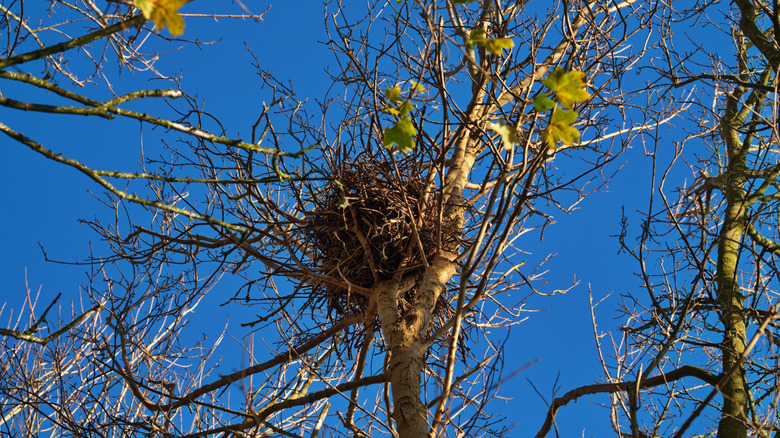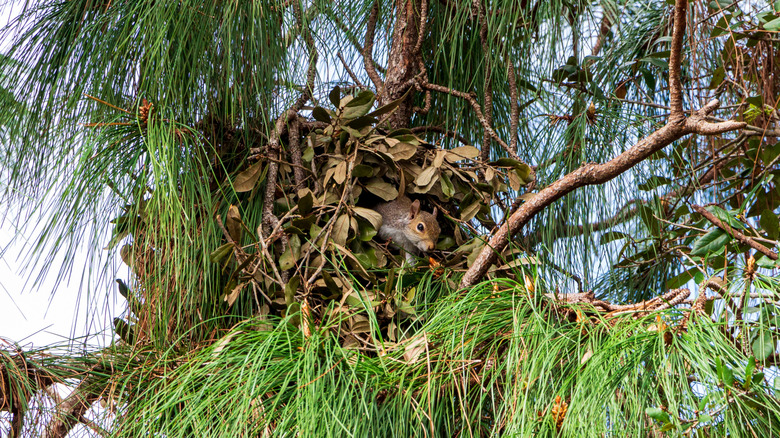The Strange Object North Carolina Residents Might See In Trees That's Not A Bird's Nest
Birds use various materials to build their nests, ranging from mud and rocks to sticks and twigs and other found materials. As birds are among the best mothers in the animal kingdom, a nest serves as a welcome reminder of the bond between mother and chick. However, in North Carolina, residents have spotted something unexpected — leafy balls that look like bird nests, but are home to a completely different creature: squirrels.
These leafy bundles are called dreys, and they are constructed as a shelter by squirrel species that thrive in suburban environments. Due to their size, the Eastern gray squirrel makes the largest drey. These gray squirrel dreys are particularly common in North Carolina, where the Eastern gray squirrel is the state mammal. A Facebook post from the NC (North Carolina) Wildlife Resources Commission highlighted the commonality of dreys, with people from the state chiming in. One user replied to the post saying, "There is a drey on nearly every one of our trees." Others expressed surprise at either learning what a drey was or that others had not already been aware of it.
Dreys can be found across the U.S.; North Carolina is not the only state where the busy squirrel makes itself a home. They also come in various sizes, depending on the space the squirrel species needs. Red squirrels, for example, make dreys, but these may be harder to spot due to being much smaller or even be mixed up as a bird's nest. Regardless of where they appear or their size, this squirrel fortress plays a vital role in the adorable rodents' environment and should be respected.
How squirrel dreys work and what to do if you find one
Dreys are constructed similarly to bird nests, using various environmental materials. However, a drey is made from softer materials that can include leaves, moss, feathers, grass, and bark, as opposed to stones or mud, which are sometimes used in bird nests to build a solid foundation. Instead, squirrels achieve stability by building along the trunk of a tree rather than on a branch. Some dreys can be constructed to be around the size of a soccer ball, ranging between 1 and 2 feet in diameter for larger squirrels.
The drey can be used as a nursery, but functions primarily as a shelter in the winter months. Since tree squirrels don't hibernate, they need a warm, dry refuge between food hunts in winter. They're very warm, too, as the inside of a drey can be many degrees warmer than the outside air in the coldest months. A drey also keeps out predators and water, with its opening purposefully constructed toward the tree's base for safe entrance and exit.
Given how essential a drey is to a squirrel's environment, it's crucial not to disturb it. Keeping any curious cats away will help ensure they remain undisturbed. Even if the real reason a cat brings home dead animals is quite cute, dealing with the mess and the loss of life can be heartbreaking. Squirrels are also very territorial; they are not among the wild animals that love humans and should be left to their own devices. Next time you spot a leafy ball in the trees, admire it from afar to not encroach on a squirrel's cozy winter fortress.

